What device is useful for planting seedlings?
A device for planting seedlings of tomatoes and other crops (planter, planting cone) is used by gardeners in their backyards, as well as by farmers and large agricultural companies. The type of planter is also selected depending on the cultivated area. On large areas (in the field), planting of seedlings is carried out using mechanized two- and four-row planters; in household and garden plots, manual devices are used. We will consider how to choose the right hand tool for planting seedlings or make it yourself.
Types of landing gear
There are several types of devices for planting tomato seedlings in open ground, a greenhouse or a greenhouse:
- landing cone;
- device for planting seedlings;
- manual transplanter.
For planting a small amount of seedlings in small beds, the simplest device is suitable - a planting cone. With it, you can easily make many holes of the desired depth in the garden. This is an inexpensive device, and you can also make it yourself.
A manual transplanter or automated device is suitable for planting cassette seedlings in large home gardens or farms. Their cost is much higher than that of a landing cone, and you cannot make such a device with your own hands. The high cost is explained by a more complex design, in addition, such planters have undeniable advantages: when planting seedlings, there is no need to bend over, and the productivity increases by 9-15 times.
Landing cone design
The planting cone is the simplest planter. It consists of two parts - a tapered working part and a handle. Since the planter must make holes even in hard soil, the working part must be made of high-quality metal. As a rule, carbon steel or stainless steel is used for the production of such tools.
The working part (cone) is pointed on one side, there is a measuring scale on it, which is very convenient for determining the depth of the planter, depending on the type of seedlings.
When buying, pay attention to the following parameters:
- whether the device is equipped with a sliding mechanism;
- what is the length of the working part and the entire planter;
- material from which the working part and the handle are made.
The handles can be plastic or wood. Plastic ones are more practical, since the tree can dry out over time and injure the palm. Cones with a sliding mechanism are more convenient when excavating soil from a hole and filling in seedlings.
Advice
When making a purchase, be sure to ask how long the warranty covers. Manufacturers of high-quality garden equipment undertake a warranty of at least three years.
Features of the automated planting device
Many gardeners will enjoy the partially automated seedling planting tool. It consists of two main parts - a split (expandable) cone and a guide tube. The pipe can be made of steel or plastic, and the cone can be made of carbon steel only.
The planter is equipped with a limit stop: this allows you to adjust the planting depth. Such a device can be used in a greenhouse, greenhouse and for planting seedlings of tomatoes, peppers and other vegetable crops in open ground or under film mulch.
A transplant using such a tool is as follows.
- The limit stop is adjustable depending on the desired planting depth.
- A seedling is placed in the guide tube.
- The lower part is deepened all the way.
- The lever is pressed, which controls the sliding mechanism of the cone.
- The tool is lifted gently upward (open taper).
- The sliding mechanism lever returns to its original position.
Advice
When buying, you need to pay attention to the diameter of the guide tube and the cone and its compliance with the standard size of the cassettes used.
Transplanter device
The manual transplanter is suitable for planting vegetables, including peppers, tomatoes, eggplants, cabbage, as well as for planting pumpkin and melons.
Its design consists of the following elements:
- wheelbase (4 wheels, 2 longitudinal and 2 transverse beams);
- 4 cassette holders;
- landing tube;
- a control mechanism - a rudder attached to the landing tube, and a lever for opening the valve petals;
- rolling skis to compact the soil around the seedlings;
- marker that adjusts the distance between the holes.
The principle of operation of a manual transplanter is similar to the operation of a transplanter, but there are some peculiarities in the control.
- Before starting work, the marker pitch and planting depth are set.
- The operator of the machine moves it by adjusting the direction using the steering wheel.
- To form holes, you need to press the valve, which is located on the steering wheel.
- After the planting tube is lowered, you need to remove the seedlings from the cassette and lower them into the tube.
- Open the valve petals by pressing the pedal and then release the steering wheel.
- After releasing the steering wheel, the spring mechanism will lift the tube and close the petals.
- The last action - soil compaction on the sides of the plants is carried out after raising the pipe by pressing the pedal of the compaction skis.
DIY landing cone
A simple planter (planting cone) can be made by hand. This requires a small piece of stainless steel and a mold. A mold can be made by measuring a factory tool.
The easiest way to make a planter with your own hands
- Cut out two identical trapezoids.
- Sharpen the lower parts of the parts.
- Connect them together at the top (in the wide part) using a narrow overhead strip and self-tapping screws so that there is a gap of 10-15 mm between the parts.
- The handle is made from two polypropylene tubes of different diameters.
- Place a spring in a larger diameter tube, and then a smaller tube.
- Attach two narrow, curved strips of the same metal as the cone to the planter body.
- Attach the handle to the strips.
Such a simple device will be a good helper when planting seedlings of tomatoes and other crops.
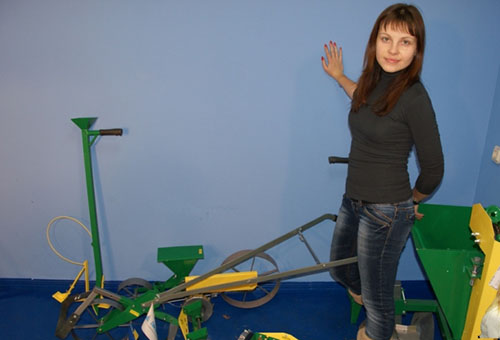
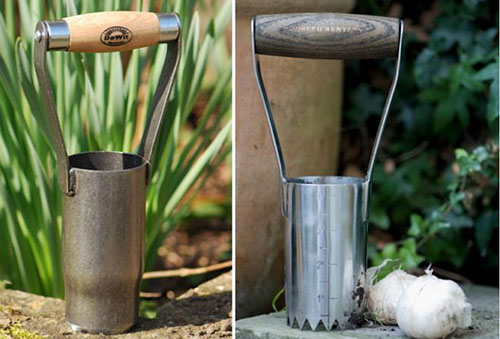
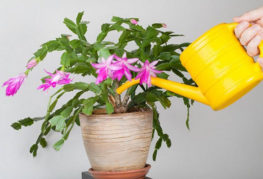

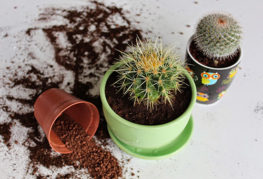
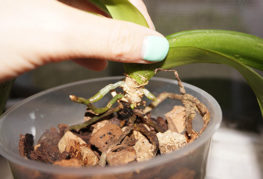
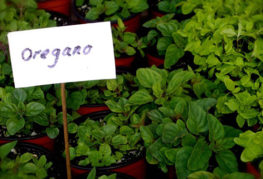
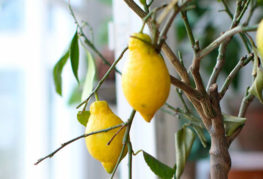
and will be published shortly.